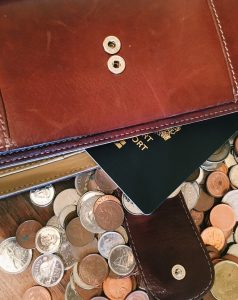When it comes to trading forex, stop loss is one of the most important tools in a trader’s arsenal. It is a predetermined level at which a trader exits a trade in order to limit the losses. Placing a stop loss is crucial for a trader as it helps manage risk, preserve capital, and prevent emotional trading. In this article, we will discuss where to place stop loss with four-hour forex.
Four-hour forex trading is a popular strategy among traders as it allows them to capture medium-term trends while avoiding the noise of short-term price movements. The four-hour chart is ideal for traders who want to take a more patient approach to trading forex. The time frame provides a good balance between the speed of the daily chart and the noise of the hourly chart.
Before discussing where to place stop loss with four-hour forex, it is important to understand the concept of support and resistance. Support is a level at which the price of an asset tends to stop falling, while resistance is a level at which the price tends to stop rising. These levels are determined by previous price action and are considered key levels in technical analysis.
When placing a stop loss with four-hour forex, traders should consider the support and resistance levels on the chart. If a trader is going long on a currency pair, they should place their stop loss below the support level. This is because if the price falls below the support level, it is likely to continue falling, and the trader’s stop loss will be triggered, limiting their losses. Similarly, if a trader is going short on a currency pair, they should place their stop loss above the resistance level.
Another factor to consider when placing a stop loss with four-hour forex is the volatility of the market. Volatility refers to the degree of price movement in a particular currency pair. Highly volatile markets tend to have larger price movements, while less volatile markets have smaller price movements. When the market is highly volatile, traders should place their stop loss further away from the entry point to avoid being stopped out by a short-term price movement. Conversely, when the market is less volatile, traders can place their stop loss closer to the entry point.
Traders should also consider the size of their trading account when placing a stop loss with four-hour forex. The size of the stop loss should be determined by the amount of risk a trader is willing to take on each trade. Generally, traders should not risk more than 1-2% of their trading account on any single trade. This means that if a trader has a $10,000 trading account, they should not risk more than $100-$200 on any single trade. The size of the stop loss should be determined by the entry price and the amount of risk a trader is willing to take on the trade.
In addition to support and resistance levels, volatility, and account size, traders should also consider the overall trend of the market when placing a stop loss with four-hour forex. If the market is in an uptrend, traders should place their stop loss below the most recent swing low. If the market is in a downtrend, traders should place their stop loss above the most recent swing high. This helps traders stay in the trade as long as the trend is intact while limiting their losses if the trend reverses.
In conclusion, placing a stop loss with four-hour forex requires careful consideration of various factors, including support and resistance levels, volatility, account size, and overall trend. Traders should always use a stop loss to manage risk and protect their capital. By using the right stop loss placement strategy, traders can minimize their losses and maximize their profits in forex trading.





